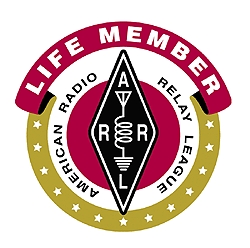This weekend I decided to tear my K3 apart. It had been working flawlessly since January, and no good deed goes unpunished, so it was time mess up a good thing. I wanted to install the second receiver (KRX3) and add a SVGA board to my P3, which requires removing three components from the main PCB to increase the the current output capability of the switched DC jack used to power the P3.
How hard could that be? Well not very from a rework point of view. The SMT diode D34 is easy to remove and replace, and even easier to get to (remove the bottom cover). Some solder braid quickly removed the solder holding it down and gentle tweezing action lifted the old part off. After cleaning up the pads and putting on a bit of no-clean solder, the new part was installed. Just watch the polarity per the instructions.
The other two part, both leaded, were more of a chore, but mechanically, and this was my big got-ya. I was convinced that I didn’t need to remove the PA assembly (they said that part was optional) as I had pretty clear view of things. But unfortunately, when the bottom cover was removed, two standoffs, screwed to the main PCB, which support the bottom cover, had come off with the bottom cover itself. The screws and washers had fallen inside the PA area. Looks like the standoffs and screws had not been properly torqued at assembly time (at the Elecraft factory), as the standoffs should have remained firmly bolted to the board, not the bottom cover. So I had to take the PA assembly out anyway. You can bet I socked the screws down when I put things together.
When it came time to remove the two leaded parts, RFC48 and F2, my recommendation is to use a solder sucker. This is because all the solder has to be removed from the holes to make enough clearance for the new parts (especially F2 which has substantially thicker leads). F2 came out like a dream, with one pass of the solder sucker per lead. But RFC48 was not as successful, despite even more clearance — I think this was due to thermal conductivity of the ground plane cooling things down quickly. Rather than bugger things up, I resoldered the part, then melted the new solder, holding the iron on for a longer period of time, then sucked the solder out on the next attempt.
Putting the new parts in was a snap. Were it not for the time involved in correcting lose standoffs, it would have taken 30 minutes. Instead it took over an hour as I wanted to locate the missing hardware before I turned the rig over and lost something in the process.
So my warning to anyone installing that modification yourself: Make darned sure the standoffs remain attached to the PCB, and things haven’t come lose when removing the bottom cover. If they are lose sock them down before things fall apart. In fact, it might be a better idea to remove the top cover and sock those screws down BEFORE taking the bottom cover off. They are the same three screws that hold the aluminum bracket that holds the PA assembly onto the main PCB. Of course one of them can’t be reached without removing the PA (which is no big deal in reality).








